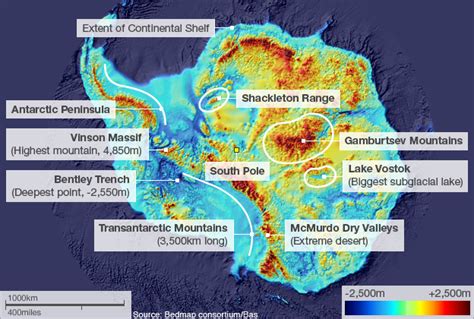
Scientists have unearthed ancient secrets hidden beneath the Gamburtsev Subglacial Mountains in Antarctica, revealing a landscape shaped by tectonic activity billions of years ago and providing crucial insights into the formation of the East Antarctic Ice Sheet. New research, utilizing advanced geophysical techniques, has painted a detailed picture of the mountain range’s rugged terrain, revealing its role in initiating and stabilizing the massive ice sheet that covers much of the continent.
Beneath the seemingly featureless expanse of the East Antarctic Ice Sheet lies a hidden world, the Gamburtsev Subglacial Mountains. These mountains, completely buried under thousands of meters of ice, have long intrigued scientists. Now, a new study published in a leading scientific journal details the most comprehensive mapping of the range to date, revealing a complex geological history that stretches back billions of years. The research, utilizing data gathered from ice-penetrating radar and gravity measurements, provides unprecedented detail about the mountains’ structure and their profound impact on the formation and stability of the East Antarctic Ice Sheet.
The Gamburtsev Mountains, often referred to as the “ghost mountains” because they are invisible at the surface, are comparable in size to the European Alps. Their discovery in 1958 by a Soviet Antarctic expedition was a major surprise, raising questions about their origin and their influence on the Antarctic ice. The latest research provides compelling evidence that the mountains are not simply a result of relatively recent geological activity, but instead represent an ancient continental rift system, similar to the East African Rift Valley, that was later rejuvenated by tectonic forces.
According to the study, the Gamburtsev Mountains began to form over a billion years ago during the Precambrian period, when ancient continental crust was rifted apart. This rifting process created a series of valleys and mountains, which were subsequently eroded over millions of years. However, around 250 million years ago, during the breakup of the supercontinent Gondwana, the region experienced renewed tectonic activity, causing the mountains to uplift and become more prominent. This uplift played a crucial role in initiating the East Antarctic Ice Sheet, as the elevated terrain provided a nucleus for ice accumulation.
“The Gamburtsev Mountains are like a refrigerator for East Antarctica,” explains Dr. Fausto Ferraccioli, the lead author of the study and a geophysicist at the British Antarctic Survey. “They create cold conditions at the base of the ice sheet, which helps to keep it stable.” The mountains’ rugged terrain also influences the flow of ice, creating channels and pathways that direct the ice towards the coast. These channels can either accelerate or slow down the rate at which ice is lost from the continent, making the Gamburtsevs a key factor in understanding Antarctica’s contribution to global sea-level rise.
The research team employed a variety of geophysical techniques to map the Gamburtsev Mountains. Ice-penetrating radar, mounted on aircraft, was used to send radio waves through the ice sheet and measure the time it took for the waves to bounce back off the underlying bedrock. This data was then used to create a three-dimensional map of the mountains’ surface. Gravity measurements, which detect variations in the Earth’s gravitational field caused by differences in rock density, were also used to infer the composition and structure of the mountains. By combining these different datasets, the researchers were able to create a highly detailed and accurate picture of the Gamburtsev Mountains.
The findings of this study have significant implications for our understanding of the past, present, and future of the East Antarctic Ice Sheet. By understanding the geological history of the Gamburtsev Mountains, scientists can better understand the conditions that led to the formation of the ice sheet millions of years ago. This knowledge can then be used to improve models of ice sheet behavior and to predict how the ice sheet will respond to future climate change.
“The East Antarctic Ice Sheet is the largest ice mass on Earth, and it contains enough water to raise global sea levels by over 50 meters,” says Dr. Carol Finn, a geophysicist at the United States Geological Survey and a co-author of the study. “It is therefore crucial that we understand the factors that control its stability.” The Gamburtsev Mountains, she adds, are one of those key factors, and this new research provides valuable insights into their role.
The research also highlights the importance of international collaboration in Antarctic science. The data used in this study was collected over several years as part of a major international project called AGAP (Antarctic Gamburtsev Province Project). This project brought together scientists from several countries, including the United States, the United Kingdom, Germany, and Australia, to study the Gamburtsev Mountains and their surrounding environment. The success of AGAP demonstrates the power of international cooperation in tackling complex scientific challenges.
The study provides a compelling narrative of the Gamburtsev Mountains, connecting their ancient origins to their present-day influence on the East Antarctic Ice Sheet. It underscores the need for continued research in this remote and challenging region, as the future of the Antarctic ice and global sea levels are inextricably linked to the secrets hidden beneath the ice.
Further Details from the Study
The study delves into specific features of the Gamburtsev Mountains, revealing details about their topography, rock composition, and the processes that have shaped them over millions of years. The researchers identified several distinct geological provinces within the mountain range, each with its own unique characteristics. Some areas are characterized by deeply incised valleys and sharp peaks, while others are more gently sloping and rounded. These differences reflect variations in the underlying rock types and the history of erosion and uplift.
The researchers also found evidence of ancient glacial activity in the Gamburtsev Mountains. They identified features such as U-shaped valleys and glacial striations, which indicate that the mountains were once covered by glaciers, even before the formation of the East Antarctic Ice Sheet. This suggests that the Gamburtsev Mountains have been a center of ice accumulation for millions of years, playing a key role in the development of Antarctica’s glacial landscape.
Another important finding of the study is the discovery of a large sedimentary basin beneath the Gamburtsev Mountains. This basin, which is filled with layers of sediment deposited over millions of years, provides a valuable archive of past climate and environmental conditions. By studying the sediments in this basin, scientists can learn more about the evolution of the East Antarctic Ice Sheet and the factors that have influenced its size and stability.
The research also provides insights into the geothermal heat flux beneath the Gamburtsev Mountains. Geothermal heat flux is the amount of heat that flows from the Earth’s interior to the surface. The researchers found that the geothermal heat flux is relatively high in some areas of the Gamburtsev Mountains, which could have implications for the stability of the ice sheet. High geothermal heat flux can melt the ice at the base of the ice sheet, increasing the rate at which it flows towards the coast.
The Broader Context: Antarctic Ice Sheet Dynamics
The Gamburtsev Mountains are just one piece of the puzzle when it comes to understanding the dynamics of the East Antarctic Ice Sheet. The ice sheet is a vast and complex system, influenced by a variety of factors, including temperature, precipitation, ocean currents, and the underlying topography. Understanding how these factors interact is crucial for predicting how the ice sheet will respond to future climate change.
One of the biggest challenges in studying the East Antarctic Ice Sheet is its sheer size and remoteness. The ice sheet covers an area of over 14 million square kilometers, and much of it is located in areas that are difficult to access. This makes it challenging to collect data and to monitor changes in the ice sheet over time.
However, advances in technology are making it easier to study the East Antarctic Ice Sheet. Satellites, for example, are now used to monitor the ice sheet’s surface elevation, velocity, and mass balance. These data provide valuable insights into how the ice sheet is changing over time.
Computer models are also being used to simulate the behavior of the East Antarctic Ice Sheet. These models can be used to predict how the ice sheet will respond to different climate scenarios and to assess the potential impacts of ice sheet loss on global sea levels.
The research on the Gamburtsev Mountains is an important contribution to our understanding of the East Antarctic Ice Sheet. By providing new insights into the geological history and dynamics of the mountains, this research helps to improve our ability to predict the future of the ice sheet and its impact on the planet.
International Collaboration in Antarctic Research
The Antarctic Gamburtsev Province Project (AGAP), which provided the data for this study, is a prime example of the importance of international collaboration in Antarctic research. Antarctica is a unique and challenging environment, and studying it requires the expertise and resources of scientists from many different countries.
International collaboration allows scientists to share data, resources, and expertise, leading to more comprehensive and impactful research. It also helps to foster a spirit of cooperation and mutual understanding among nations, which is essential for addressing global challenges such as climate change.
The Antarctic Treaty System, which governs activities in Antarctica, promotes international cooperation and ensures that the continent is used for peaceful purposes. The treaty has been instrumental in protecting Antarctica’s environment and in fostering scientific research on the continent.
The future of Antarctic research depends on continued international collaboration. By working together, scientists can unlock the secrets of Antarctica and gain a better understanding of our planet’s past, present, and future.
The Significance of Understanding Antarctica’s Past
The research on the Gamburtsev Mountains highlights the importance of understanding Antarctica’s past in order to predict its future. The geological history of the mountains provides clues about the conditions that led to the formation of the East Antarctic Ice Sheet millions of years ago. This knowledge can then be used to improve models of ice sheet behavior and to predict how the ice sheet will respond to future climate change.
Antarctica’s past is also relevant to understanding global climate change. The ice core records from Antarctica provide a detailed history of Earth’s climate over the past 800,000 years. These records show that Earth’s climate has varied naturally over time, but that the current rate of warming is unprecedented.
By studying Antarctica’s past, scientists can gain a better understanding of the natural variability of Earth’s climate and the role that human activities are playing in driving climate change. This knowledge is essential for developing effective strategies to mitigate the impacts of climate change.
Future Research Directions
The research on the Gamburtsev Mountains has opened up new avenues for future research. One important area of research is to study the sediments in the large sedimentary basin beneath the mountains. These sediments contain a valuable archive of past climate and environmental conditions, which could provide insights into the evolution of the East Antarctic Ice Sheet.
Another important area of research is to investigate the geothermal heat flux beneath the Gamburtsev Mountains. High geothermal heat flux could melt the ice at the base of the ice sheet, increasing the rate at which it flows towards the coast. Understanding the distribution and magnitude of geothermal heat flux is crucial for predicting the stability of the ice sheet.
Future research should also focus on improving our ability to model the behavior of the East Antarctic Ice Sheet. This requires developing more sophisticated models that can accurately simulate the complex interactions between temperature, precipitation, ocean currents, and the underlying topography.
Finally, continued international collaboration is essential for advancing our understanding of Antarctica. By working together, scientists from different countries can share data, resources, and expertise, leading to more comprehensive and impactful research.
FAQ: Unveiling Antarctica’s Hidden Mountain Range
1. What are the Gamburtsev Mountains?
The Gamburtsev Subglacial Mountains are a range of mountains located in the heart of East Antarctica, completely buried beneath thousands of meters of ice. They are comparable in size to the European Alps and were discovered in 1958 by a Soviet Antarctic expedition. The mountains are of interest to scientists because they are believed to have played a crucial role in the formation and stabilization of the East Antarctic Ice Sheet.
2. How did scientists discover and study the Gamburtsev Mountains since they are hidden under ice?
Scientists use a variety of geophysical techniques to study the Gamburtsev Mountains. The primary method is ice-penetrating radar, which involves sending radio waves through the ice sheet and measuring the time it takes for the waves to bounce back off the underlying bedrock. This data is then used to create a three-dimensional map of the mountains’ surface. Gravity measurements, which detect variations in the Earth’s gravitational field caused by differences in rock density, are also used to infer the composition and structure of the mountains. These techniques were employed during the Antarctic Gamburtsev Province Project (AGAP), a major international effort.
3. Why are the Gamburtsev Mountains important for understanding climate change?
The Gamburtsev Mountains are believed to have played a key role in the initiation and stabilization of the East Antarctic Ice Sheet, the largest ice mass on Earth. Understanding the mountains’ geological history and their influence on ice sheet dynamics can help scientists improve models of ice sheet behavior and predict how the ice sheet will respond to future climate change. The stability of the East Antarctic Ice Sheet is crucial because it contains enough water to raise global sea levels significantly.
4. How old are the Gamburtsev Mountains and how were they formed?
The Gamburtsev Mountains are ancient, with their formation beginning over a billion years ago during the Precambrian period. They are believed to have originated from an ancient continental rift system, similar to the East African Rift Valley. This rifting process created a series of valleys and mountains, which were subsequently eroded over millions of years. Around 250 million years ago, during the breakup of the supercontinent Gondwana, the region experienced renewed tectonic activity, causing the mountains to uplift and become more prominent.
5. What are some of the future research directions related to the Gamburtsev Mountains?
Future research directions include studying the sediments in a large sedimentary basin beneath the mountains to learn more about past climate and environmental conditions. Investigating the geothermal heat flux beneath the mountains is also important, as high heat flux could melt the ice at the base of the ice sheet. Additionally, improving computer models to better simulate the behavior of the East Antarctic Ice Sheet and continued international collaboration are essential for advancing our understanding of Antarctica.
The deeper analysis and expansion of content below:
The Geological Underpinnings: A Billion-Year History
The narrative of the Gamburtsev Mountains is not just a story of ice and climate; it is a deep dive into the Earth’s geological history. The study emphasizes that these mountains are not a recent phenomenon but rather the product of tectonic forces operating over billions of years. The initial rifting during the Precambrian era laid the foundation for the mountain range, creating a landscape of valleys and highlands. This ancient rift system is akin to the East African Rift Valley, a region known for its geological activity and diverse landscapes.
The significance of this ancient origin lies in understanding the long-term processes that have shaped the Earth’s surface. The researchers highlight that erosion played a crucial role in sculpting the initial mountain range over vast periods. However, the story does not end there. The breakup of Gondwana, a supercontinent that once encompassed much of the Southern Hemisphere, brought renewed tectonic activity. This event, occurring around 250 million years ago, triggered uplift in the Gamburtsev region, rejuvenating the mountains and setting the stage for their role in ice sheet formation.
The Ice Sheet Catalyst: How Mountains Initiate Glaciation
The uplift of the Gamburtsev Mountains was a critical catalyst for the initiation of the East Antarctic Ice Sheet. Elevated terrain provides an ideal environment for ice accumulation. As air masses rise over the mountains, they cool, leading to increased precipitation in the form of snow. Over time, this snow compacts into ice, forming glaciers. The Gamburtsev Mountains, with their rugged topography, provided numerous nucleation points for ice formation.
The mountains not only initiated the ice sheet but also influenced its flow patterns. The rugged terrain created channels and pathways that directed the movement of ice. These channels can either accelerate or decelerate the flow of ice towards the coast, impacting the rate at which ice is lost from the continent. This dynamic interplay between the mountains and the ice sheet is crucial for understanding Antarctica’s contribution to global sea-level rise.
Dr. Ferraccioli’s analogy of the Gamburtsev Mountains as a “refrigerator for East Antarctica” underscores the importance of their role in maintaining cold conditions at the base of the ice sheet. The mountains help to insulate the ice from warmer temperatures below, contributing to its stability. This is particularly important in the context of climate change, as rising temperatures could threaten the stability of the ice sheet.
Geophysical Techniques: Peering Beneath the Ice
The study of the Gamburtsev Mountains relied heavily on advanced geophysical techniques. Ice-penetrating radar, mounted on aircraft, was a key tool for mapping the mountains’ surface. This technique involves emitting radio waves that travel through the ice and reflect off the underlying bedrock. By measuring the time it takes for the waves to return, scientists can determine the depth of the ice and create a three-dimensional map of the mountains.
Gravity measurements provided complementary information about the mountains’ structure and composition. These measurements detect variations in the Earth’s gravitational field caused by differences in rock density. By analyzing these variations, scientists can infer the types of rocks that make up the mountains and their internal structure. The combination of ice-penetrating radar and gravity measurements allowed the researchers to create a highly detailed and accurate picture of the Gamburtsev Mountains.
Implications for the Future: Ice Sheet Stability in a Changing Climate
The findings of this study have significant implications for our understanding of the future of the East Antarctic Ice Sheet. The ice sheet is the largest ice mass on Earth, containing enough water to raise global sea levels by over 50 meters. Its stability is therefore of paramount importance. The research on the Gamburtsev Mountains provides valuable insights into the factors that control ice sheet stability.
By understanding the geological history of the mountains and their influence on ice flow, scientists can improve models of ice sheet behavior and predict how the ice sheet will respond to future climate change. This information is crucial for developing strategies to mitigate the impacts of sea-level rise. The study underscores the need for continued research in this remote and challenging region, as the future of the Antarctic ice and global sea levels are inextricably linked to the secrets hidden beneath the ice.
The Role of Sedimentary Basins: Archives of Past Climate
The discovery of a large sedimentary basin beneath the Gamburtsev Mountains adds another layer of complexity to the story. Sedimentary basins are geological structures that accumulate layers of sediment over long periods. These sediments can contain a wealth of information about past climate and environmental conditions.
By studying the sediments in the Gamburtsev basin, scientists can learn about the evolution of the East Antarctic Ice Sheet and the factors that have influenced its size and stability. The sediments may contain fossilized remains of plants and animals, as well as chemical signatures that reflect past temperatures and atmospheric conditions. This information can help to reconstruct the history of the Antarctic environment and to understand how it has changed over time.
Geothermal Heat Flux: A Hidden Influence
The study also highlights the role of geothermal heat flux in influencing ice sheet stability. Geothermal heat flux is the amount of heat that flows from the Earth’s interior to the surface. High geothermal heat flux can melt the ice at the base of the ice sheet, increasing the rate at which it flows towards the coast.
The researchers found that the geothermal heat flux is relatively high in some areas of the Gamburtsev Mountains. This could have implications for the stability of the ice sheet, particularly in the context of climate change. As temperatures rise, the ice sheet may become more vulnerable to melting from below, potentially accelerating the rate of ice loss.
International Cooperation: The AGAP Project
The Antarctic Gamburtsev Province Project (AGAP) stands as a testament to the power of international cooperation in scientific research. The project brought together scientists from several countries, including the United States, the United Kingdom, Germany, and Australia, to study the Gamburtsev Mountains and their surrounding environment.
The success of AGAP demonstrates the benefits of sharing data, resources, and expertise. By working together, scientists can achieve more than they could alone. International collaboration is particularly important in Antarctica, a remote and challenging environment that requires the expertise and resources of many different countries.
The Antarctic Treaty System: A Framework for Cooperation
The Antarctic Treaty System provides a framework for international cooperation in Antarctica. The treaty, which was signed in 1959, ensures that Antarctica is used for peaceful purposes and that scientific research is conducted freely. The treaty has been instrumental in protecting Antarctica’s environment and in fostering scientific research on the continent.
The Antarctic Treaty System is a model for international cooperation in other areas, such as climate change. By working together, nations can address global challenges and promote a more sustainable future.
The Future of Antarctic Research: Unlocking the Secrets of the Ice
The research on the Gamburtsev Mountains has opened up new avenues for future research. One important area of research is to study the sediments in the sedimentary basin beneath the mountains. These sediments contain a valuable archive of past climate and environmental conditions, which could provide insights into the evolution of the East Antarctic Ice Sheet.
Another important area of research is to investigate the geothermal heat flux beneath the Gamburtsev Mountains. High geothermal heat flux could melt the ice at the base of the ice sheet, increasing the rate at which it flows towards the coast. Understanding the distribution and magnitude of geothermal heat flux is crucial for predicting the stability of the ice sheet.
Future research should also focus on improving our ability to model the behavior of the East Antarctic Ice Sheet. This requires developing more sophisticated models that can accurately simulate the complex interactions between temperature, precipitation, ocean currents, and the underlying topography.
Finally, continued international collaboration is essential for advancing our understanding of Antarctica. By working together, scientists from different countries can share data, resources, and expertise, leading to more comprehensive and impactful research.
The Gamburtsev Mountains: A Window into the Earth’s Past and Future
The Gamburtsev Subglacial Mountains are more than just a hidden mountain range beneath the ice. They are a window into the Earth’s past and a key to understanding its future. Their ancient origins, their role in ice sheet formation, and their influence on ice flow make them a critical component of the Antarctic environment.
By studying the Gamburtsev Mountains, scientists can gain a better understanding of the processes that have shaped our planet and the challenges that we face in a changing climate. The research on these mountains underscores the importance of continued exploration and research in Antarctica, a continent that holds the key to understanding our planet’s past, present, and future.









